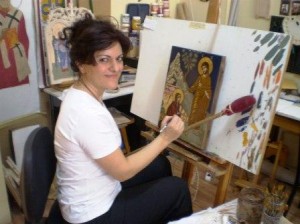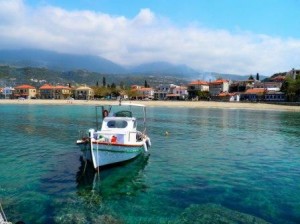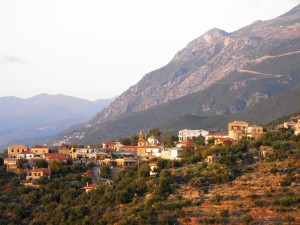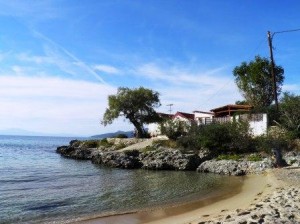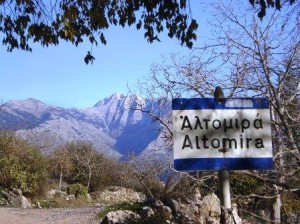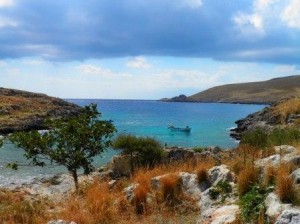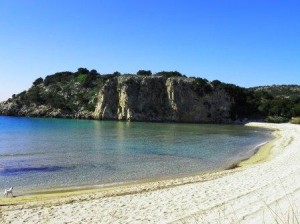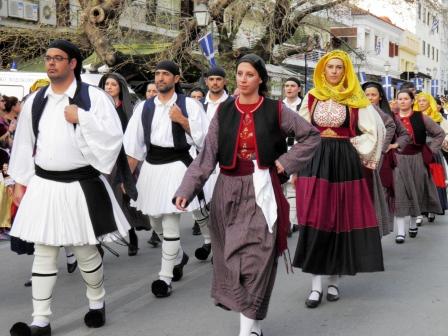
Independence Day on March 23 in Kalamata is a great opportunity to see traditional folk costumes and customs and the day ends with festivities and fun.
SOME people have written to me lately asking how they can go on holiday and find the real Greece, something closer to the unpredictable, plate smashing Zorba-style Greece of old, before mass tourism and the spread of EU cultural blandness.
It’s impossible to turn the clock back but obviously you’ll get a head start with this one if you steer away from popular destinations that attract most tourists, and particularly at the height of summer, even if these are often the most picturesque places, like Santorini or Mykonos.
If only a Greek island will do, then pick one without an airport so it’s harder to get to, like gorgeous Symi in the Dodecanese, or Serifos and Sifnos in the Cyclades, tiny Paxos, near Corfu, though there are numerous others. These islands will give you a better chance to conjure up a more traditional Greece, and engage with the locals. Tourists often avoid the mainland and yet it’s here you can still find towns and villages that are more authentically Greek, especially if you go off-season.
I am biased after spending three years in the wonderful, unspoilt southern Peloponnese, but you can really get away from it all here and tackle a slightly more raw side of life. Away from the more popular tourist areas, you will find hill villages galore where life moves to a slightly different beat and hasn’t really changed that much in centuries. In the Mani hinterland you will find small Greek communities, olive farmers, goat herders, and at least one tiny cove where the real George Zorbas, who inspired the book and film character, hung out and danced the sirtaki along the shoreline. In search of old Greece? It doesn’t get better than that.
I’ve put together a few things you can definitely do if meeting locals and learning about the Greek way of life is your objective.
Get spiritual
1. If you find yourself in Greece at Easter, do take part in some of the celebrations, as this is the most important time of the year for Greeks. Whether you’re religious or not, it’s worth going to some of the daily Orthodox Church services that lead up to Easter Saturday for their sheer spine-tingling drama, ritual and the Byzantine chanting. In fact, any time of the year it’s worth going along to a Sunday service to observe Greeks in their own unique setting. No-one will mind if you just go for 10 minutes because in this respect the Orthodox service is much more flexible than our services, but don’t push your luck by dropping in on the way to the beach dressed in shorts and flip-flops.
Feasts and fairs
2. During the summer months, paniyiria (fairs) and saint’s day ‘feasts’ are held all over Greece, particularly in the villages. In the southern Peloponnese alone there are 64 different paniyiria for various saints and to mark other religious events. There are also festivals commemorating different foods and crops: a Potato Festival in the Mani, an Onion and Tomato Festival in the Messinian peninsula and others to honour bread, wine, figs, fish, to name a few. Many of these fairs last several days and are the best place to rub shoulders with locals, and are great fun. For details of various festivals held in the southern Peloponnese visit the Costa Navarino website www.costanavarino.com Ask at your local kafeneion, council office or tourist office about festivals and fairs.
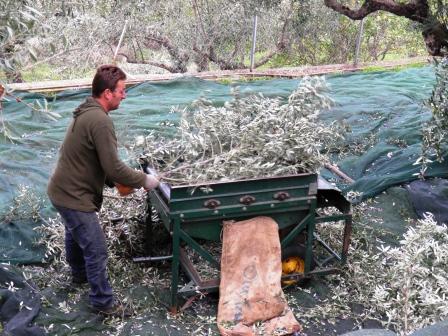
Off season, volunteer to help a farmer with his olive harvest. It’s hard work but you’ll feel like a local.
Try an olive harvest
3. If you are in Greece in November or later, especially in olive growing areas like Crete, southern Peloponnese or some of the islands, offer to help at a local olive harvest to get a feel for this ancient practice which is vital to the local economy. There are plenty of farmers in Greece still suffering because of the economic crisis who will be happy for you to help – and you might get some olive oil at the end of it all. Ask around your local village.
Food for thought
4. Seek out tavernas and coffee shops where only Greeks go because the food will probably be more authentic for a start and you will soak up some local colour. If you’re in a city, try to find the small street stalls selling souvlaki and gyros (slices of grilled meat in pitta bread), favoured by locals. In Kalamata try Jimmy’s, near the Archaelogical Museum in 23rd March Square. And in towns and cities try an old-style ouzerie which sells ouzo and other drinks, as well as serving meze (appetisers) to go with them. Plenty of interesting characters congregate in these places.
Market forces
5. If you’re in a town or city, seek out local fruit and veg markets where you can soak up some Greek vibes. In Kalamata there is a fabulous laiki community market on a Wednesday morning in the city, not far from the historic centre. There’s a vibrant camaraderie among the sellers and Greeks from all walks of life do their weekly shop here. You’ll pick up colourful stories, bargains and the odd freebie. There are also nice bars and cafes nearby.
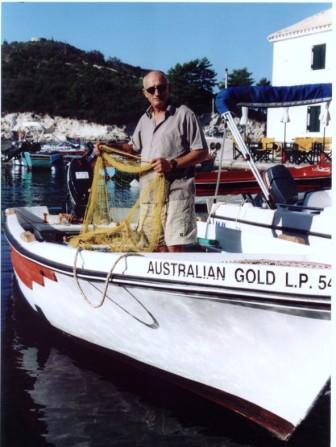
Find a fisherman in the harbour to take you out on his boat. You never know how the story might end.
Float your boat
6. If you’re staying in or near a fishing village, go down early in the morning to where the boats are landing fish for a real local experience and try to find a fisherman who will take you out for a morning to experience a traditional way of earning a living. Ask in your local kafeneion about this. In fact, the kafeneion is the best place to go for almost any inquiry in Greece.
Icons of style
7. Try to find art and crafts studios, or jewellery workshops in villages and towns where you can watch someone carrying out a traditional skill. Although I have mentioned her a few times before, one of my favourite people in the southern Peloponnese is Maria Tsiboka, a traditional icon painter and a lovely soul with excellent English who will demonstrate how a Byzantine icon is produced, at Porfyra Icons, her studio and shop in the town of Mystras (near Sparta). The town is beside the hillside famous as the last outpost of the Byzantine Empire. Maria also has a lovely collection of icons at reasonable prices and will paint one to your own specifications and post it back home for you. www.porfyraicons.gr (003) 27310 82848.
Learn the lingo
8. It might seem obvious but try to learn some Greek if you can and use it everywhere even if your efforts are riddled with mistakes. I have made many howlers of my own over the years but Greeks will only love you all the more for trying and it’s your first step in engaging with the culture. You might even make a new Greek friend and be invited to their home for a family celebration or for Easter Sunday lunch with spit- roasted lamb and red-dyed eggs to crack for good luck. You know you’ve done something right in Greece when this happens. Enjoy it!
A book about living in Greece
For more details about my book, Things Can Only Get Feta based on three years living in the Mani, southern Greece during the crisis, visit my website www.bigfatgreekodyssey.com or visit Facebook www.facebook.com/ThingsCanOnlyGetFeta
Visit Amazon to buy the book (Kindle version – new edition). A new edition of the paperback will also be available shortly.
© Text and photographs copyright of the authors 2014. No content/text or photographs may be copied from the blog without the prior written permission of the authors. This applies to all posts on the blog.


